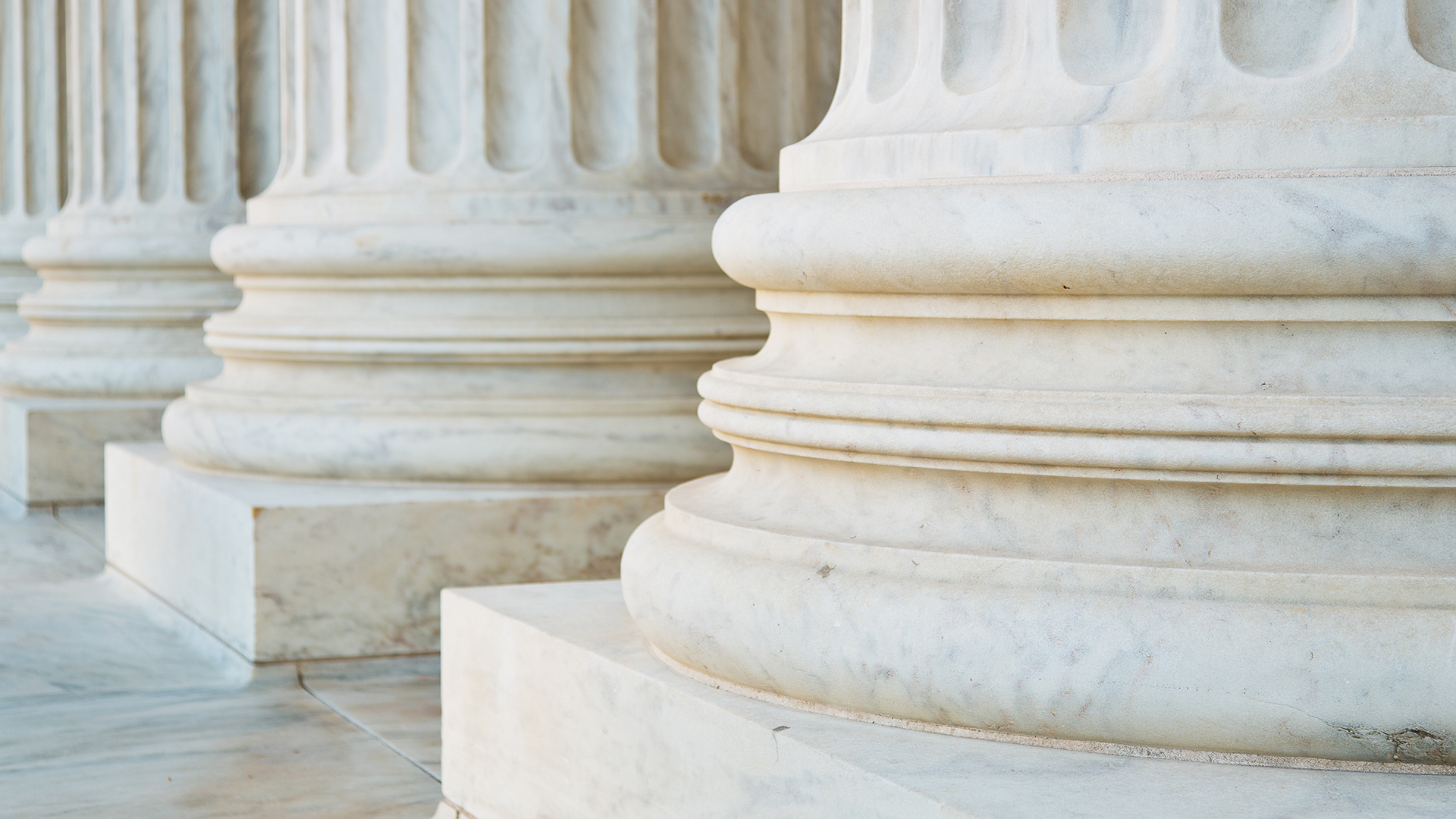On October 31, 2022, the United States Department of Justice's (DOJ) Antitrust Division announced that it had both charged and resolved a criminal violation of Section 2 of the Sherman Antitrust Act (Section 2) for the first time in almost fifty years in United States v. Zito. Zito therefore is an important case as the first public indication of how the Division will approach its resurrected Section 2 criminal enforcement efforts.
The facts
The case charges a single count of Section 2 for an attempted monopolization offense. As laid out in court documents, the defendant owned a company that filled cracks in asphalt and pavement for publicly funded highway projects in Montana, Wyoming and neighboring states. The markets are characterized in case filings as consolidated, with the two companies involved in the case often the only bidders for projects.
In early 2020, Zito called his primary competitor and proposed a "strategic partnership," under which the two companies would allocate projects by state. But rather than becoming a co-conspirator, Zito's competitor reported the call to the Federal Highway Administration, spurring an investigation by the Department of Transportation Inspector General. Federal agents working with the cooperating informant recorded additional calls with Zito between March and October 2020. In these calls, Zito "stated his intention to eliminate [the other company] as a competitor" and told his competitor that "if they agreed not to compete, their companies' revenue streams would be more stable and their margins would be higher." Zito also proposed a written contract that would memorialize the agreement but obscure its true intent by including pretextual language about a bogus acquisition of the competitor and the sale of equipment at an inflated value.
Background
Section 2 violations have been crimes since the Sherman Act's enactment in 1890, and they became felonies in 1974. The plain language of the statute encompasses three offenses: (i) monopolization, (ii) attempted monopolization and (iii) conspiracy to monopolize.
Despite this longstanding law, for nearly fifty years, the Division's criminal enforcement efforts have been limited to the so-called "hardcore," or per se, offenses under Section 1 of the Sherman Act: price-fixing, bid-rigging and market allocations. Thus, the Division turned heads when, in March 2022, its leadership announced that, moving forward, the Division would criminally investigate and prosecute Section 2 offenses, breaking with its longstanding practices.
Further, in June 2022, Division leadership advised the defense bar and business community not to expect additional guidance on this new enforcement direction. The Division's advice to those seeking further guidance on Section 2 prosecutions was to "read the cases." But those cases dated back decades, to a period when criminal Sherman Act violations were misdemeanors, and the lack of developed case law led to questions about what a criminal Section 2 case would look like and how the Division would pursue the conduct.
Takeaways and remaining questions
Zito is important as the first case under DOJ's revived criminal Section 2 enforcement. While the case sheds some light on what else might be expected, it still leaves many questions unanswered.
From court documents, Zito suggests a few key takeaways:
- Serious about Section 2. With a conviction in Zito at the start of this effort, the Division is likely to continue efforts for criminal enforcement of Section 2.
- Intent is key. Two of the offenses under Section 2 – attempted monopolization (the charge in Zito) and conspiracy to monopolize – require a specific intent to acquire or maintain a monopoly. Zito gives us a window into what this intent might look like. Case filings make clear that investigators recorded the defendant's own statements about his intent to control the Montana and Wyoming crack-sealing markets. Additionally, Division prosecutors had strong "consciousness of guilt" evidence. Specifically, the charging document notes Zito's efforts to "paper over" the illegal agreement with a sham contract.
- Market structure matters. Court documents clarify that the conduct occurred in a highly concentrated market, in which the two companies involved often were the only bidders for projects. This market structure appears to play a key role in the case, establishing a dangerous probability of success that Zito's company would have achieved a monopoly and supporting his specific intent to monopolize. For instance, with even a few more potential bidders, an intent to monopolize would have been less clear simply because the odds of success would have been lower.
- Conspire at your own risk. Not specific to Section 2, but nonetheless notable, is that this investigation involved an informant whose cooperation with the government allowed for months-long, covert investigation of the defendant in which his own words were recorded for use against him. The simple fact of this cooperation reinforces a longstanding deterrent message of the Antitrust Division that is consistent with its goal of destabilizing cartels: you never know when you are being recorded.
Notwithstanding these early lessons, significant questions around the Division's future Section 2 criminal enforcement remain:
- What will happen in a litigated Section 2 case? The plea agreement in the Zito case avoids issues that could arise in a litigated case, such as: (1) Will DOJ pursue a Section 2 violation on a per se theory and if it doesn't, how will a criminal case proceed under a rule of reason theory?; (2) How will a "void for vagueness" challenge to the constitutionality of criminal Section 2 enforcement play out?; and (3) Will DOJ have to prove a relevant market as part of its proving an offense? These questions implicate core constitutional and evidentiary issues and project to be high hurdles for the Division to clear if and when a criminal Section 2 case is litigated.
- Is Zito an outlier? The fact pattern for Zito suggests that stars aligned for Division prosecutors: the defendant was caught at the beginning of his efforts to allocate a highly concentrated market, thanks to a cooperating informant and subsequent covert investigation. With apparently strong evidence of the defendant's specific intent captured in his own recorded words, it is hard to imagine a better set of circumstances for a Section 2 prosecution. Other investigations are unlikely to present such advantageous facts for the Division.
- Will DOJ pursue other theories of Section 2 criminal conduct? Zito flows from the defendant's attempt to allocate the market, which would have been a Section 1 violation had the offense been completed. However, the Division's primer for law enforcement indicates that "other criminal conduct" may underlie a Section 2 violation. What other non-antitrust crimes might underlie future Section 2 prosecutions? One example has been destructive or violent activity – burning down a competitor's warehouse or damaging its delivery trucks, for instance – but will Division prosecutors encounter something approaching this fact pattern, and if so, will they determine that a Section 2 count is appropriate if other charges could result in more significant penalties for the conduct? And what about other offenses, such as fraud or bribery, that the Division has charged in some of its recent procurement cases?
- What penalties might attach to Section 2 conduct? There is a plea agreement in Zito under which the parties agree to recommend a US$27,000 fine and credit favorably the defendant's acceptance of responsibility. But the plea is silent as to a term of imprisonment, and the parties reserve the right to make other arguments at sentencing. It is, therefore, premature to speculate what sentence will be imposed in the case. If prosecutors do not seek enhancements under the federal sentencing guidelines beyond the calculation suggested by the plea agreement, however, Zito's recommended sentence likely will not result in a prison term. The Antitrust Division's sentencing recommendation in the case will be the first indication of its views on the penalty for a Section 2 criminal offense and critical sentencing considerations such as the seriousness of the offense, the need for deterrence and avoiding unwarranted sentencing disparities. The sentence that the court will impose in this case likewise will be a key first data point to understand possible penalties for this conduct. Until there is a litigated sentencing following a Section 2 conviction, however, we will know little about the penalties that could attach to Section 2 offenses and the leverage that this may give Division prosecutors in other Section 2 investigations.
Conclusion
Zito is an important first data point for businesses, compliance professionals and the defense bar in an era of renewed criminal enforcement of Section 2. Before the true trajectory of the Division's enforcement can be known, however, additional points—especially those drawn from litigation—are needed.
Our antitrust group is tracking Section 2 criminal enforcement closely. We encourage you to contact us if you would like to discuss how DOJ's criminal Section 2 criminal enforcement could impact your business or how to remain in compliance with the changing environment surrounding US government enforcement of the antitrust laws.
Special thanks to Law Clerk Marisa Madaras (Washington, DC) for her assistance in the preparation of this content.



